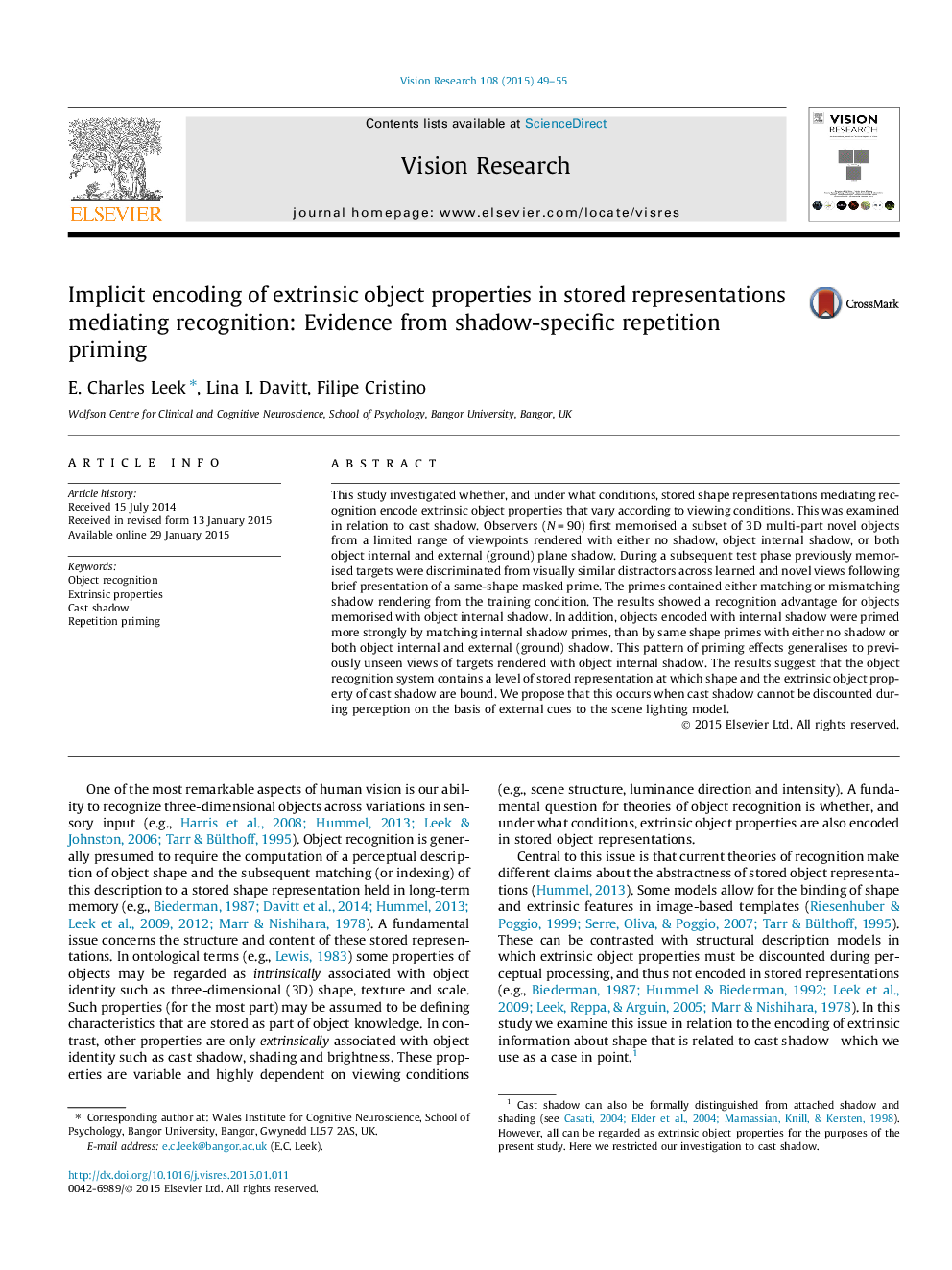| Article ID | Journal | Published Year | Pages | File Type |
|---|---|---|---|---|
| 4033694 | Vision Research | 2015 | 7 Pages |
•We examine whether stored representations of shape encode external object properties.•We measured repetition priming for objects with and without cast shadow.•Recognition was faster for prime-target pairs sharing internal cast shadow.•Object representations mediating recognition can encode shadow.
This study investigated whether, and under what conditions, stored shape representations mediating recognition encode extrinsic object properties that vary according to viewing conditions. This was examined in relation to cast shadow. Observers (N = 90) first memorised a subset of 3D multi-part novel objects from a limited range of viewpoints rendered with either no shadow, object internal shadow, or both object internal and external (ground) plane shadow. During a subsequent test phase previously memorised targets were discriminated from visually similar distractors across learned and novel views following brief presentation of a same-shape masked prime. The primes contained either matching or mismatching shadow rendering from the training condition. The results showed a recognition advantage for objects memorised with object internal shadow. In addition, objects encoded with internal shadow were primed more strongly by matching internal shadow primes, than by same shape primes with either no shadow or both object internal and external (ground) shadow. This pattern of priming effects generalises to previously unseen views of targets rendered with object internal shadow. The results suggest that the object recognition system contains a level of stored representation at which shape and the extrinsic object property of cast shadow are bound. We propose that this occurs when cast shadow cannot be discounted during perception on the basis of external cues to the scene lighting model.
